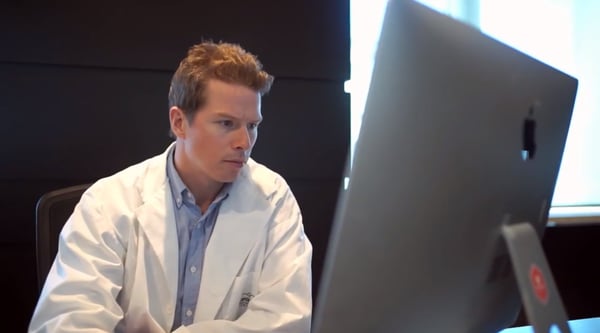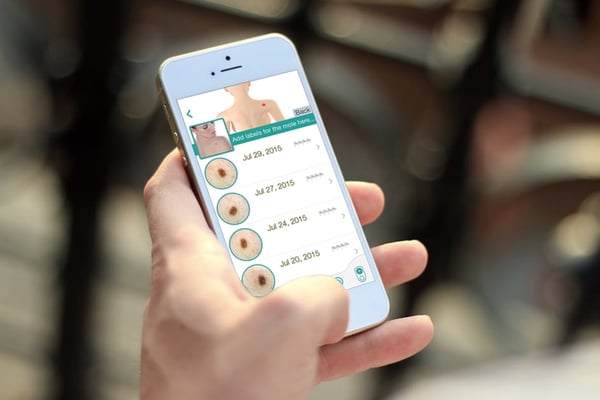by
The DermEngine Team on Dec 3, 2018
Teledermatology is the branch of telemedicine that utilizes communication technology to offer dermatology services over the internet. More recently, the advent of dermoscopy in traditional practices has also transpired into online platforms, creating teledermoscopy services in a widely available way. This article will answer five of the frequently asked questions about teledermoscopy in teledermatology services to understand its impact and benefit.
1. What is the main benefit of teledermoscopy?
Current dermatology practices have been experiencing a shortage in professional workforce, translating into unrealistic waiting times for patients. In fact, the shortage can result in as few as four professionals per 100,000 residents in the United States with particular vulnerability in underserved rural areas.1 The potential to be steadily connected through internet networks represents a great benefit for patients and doctors. Being able to readily communicate through a common platform that allows for the exchange of high-quality images of suspicious skin lesions in real time has a dramatic impact on reducing waiting times. Urgent response can follow immediately if any time-sensitive cases arise.

2. What is necessary for the practice of teledermoscopy?
The widespread reach of internet services has contributed to the expansion of teledermatology services. To this respect, the development of cloud-based EMR system is playing a unique role, favouring the exchange of multimedia content crucial for case study. Platforms such as DermEngine allow doctors to receive dermoscopic images submitted by patients. Doctors can then take the time to analyze such images assisted by support tools such as the evolution tracker, clinic analytics and visual search.
3. Is there any special equipment required for teledermoscopy services?
The crucial aspect of this service is online connection for proper communication. A cloud-based EMR system that can offer seamless access to online connectivity is imperative in this regard. On the other hand, patients will have to provide high-quality imaging of their lesions for analysis. Mobile dermoscopes play a key part in this as they empower patients to have an active and leading role in the care of their own skin.
4. How can my patients connect with me to submit their images?
Patients can make use of mobile dermoscopes to benefit from the imaging capacities of modern mobile devices such as smartphones and tablets.2 MoleScope and similar devices can offer the perfect balance between portability, quality of image, and cost/benefit ratio to make an ideal option for patients. With added features like cross-polarized lighting, a ~60x magnification capacity and interchangeable lenses, it offers images of the quality comparable to the ones taken in traditional in-clinic consultations. Additionally, the utilization of dedicated mobile applications that work seamlessly for the collection, storage, and sharing of the images taken really offers a simple mechanism to connect with doctors. What’s more, mobile application features work to deliver images and patient information to cloud-based EMR platforms in real time. Thus, an efficient workflow is established allowing for a diagnosis to be received in a few days, in contrast to longer waiting periods for personal consultations.
5. What are the future directions of teledermoscopy?
The close relation of teledermoscopy with technological and communication systems anticipates a rapid evolution of the practice as such systems keep evolving and become widely available. The utility of teledermoscopy has been shown to increase the accuracy of teledermatology in around 15%, making it a powerful tool for skin cancer early detection as it continues to expand.3 Furthermore, approaches such as total body photography are emerging as the latest trend in dermatology imaging tools to support diagnosis. Being able to perform total body photography to track every single spot in a patient, while combining the deep analysis capability of dermoscopic imaging for suspicious lesions puts teledermoscopy at the forefront of the fight against skin cancer.

Conclusion
The power of teledermatology services has shown its efficacy in reducing patients’ waiting times to receive skincare.4 Similarly, the proven power of dermoscopy services shown in traditional clinical setting has now been adopted for telehealth services, thus dramatically improving the accuracy of diagnoses. As greater development is experienced in the technological side of communications, more accessibility and improved services can be offered to patients. Indeed, shorter waiting times, streamlined workflows and more accurate diagnoses are shaping new horizons in tackling skin cancer for doctors and patients alike.
-The MetaOptima Team
Are you ready to experience how mobile dermoscopy tools like MoleScope II can support your practice? Order it today!
 Sources:
Sources:
1-https://www.reuters.com
2-https://www.medicaljournals.se
3-https://www.ncbi.nlm.nih.gov
4-https://medcitynews.com
 Sources:
Sources:





